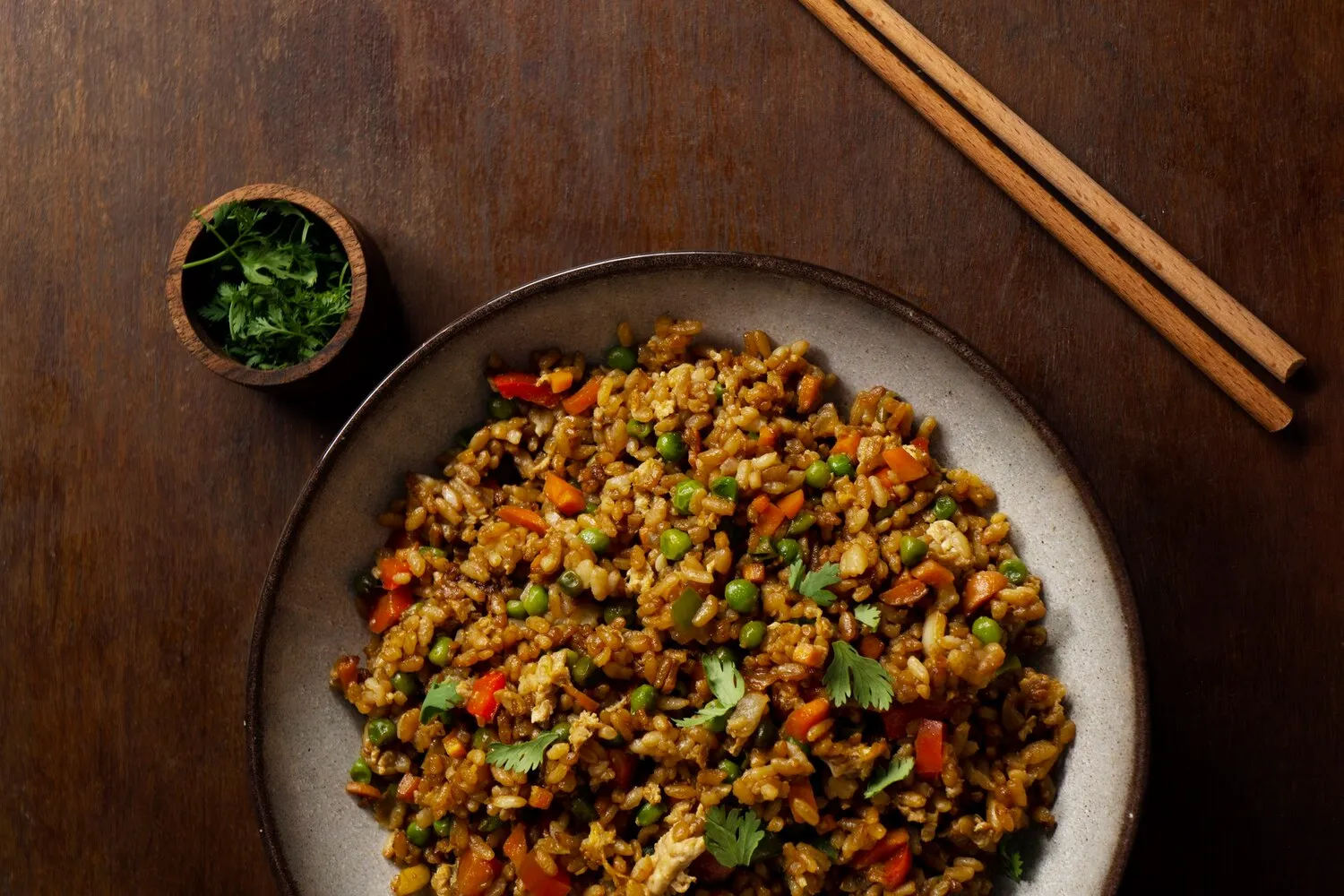
Kimchi Fried Rice
Fried rice with kimchi, often topped with a fried egg. A classic Korean comfort food.
Nutrition Facts
* The % Daily Value (DV) tells you how much a nutrient in a serving of food contributes to a daily diet. 2,000 calories a day is used for general nutrition advice.
Kimchi fried rice, or Kimchi Bokkeumbap, is a relatively modern dish in Korean cuisine, emerging as a resourceful way to utilize leftover rice and over-fermented kimchi. Its popularity grew with the increasing availability of rice cookers and refrigeration in Korean households, allowing for leftover rice to be stored and reused. It's also a direct reflection of Korean's ingenuity with fermented foods, maximizing flavor and minimizing waste.
Kimchi fried rice holds a special place in Korean culture as a comforting, easy-to-make meal, often associated with home cooking and resourcefulness.
Resourcefulness and Leftovers
It is a prime example of Korean culinary philosophy of minimizing food waste by creatively repurposing leftover ingredients, especially overripe kimchi and leftover rice.
Comfort Food
The dish is considered comfort food, easily prepared and enjoyed at home, especially for a quick lunch or dinner.
Versatility
Its versatility makes it a popular choice for customizing with various ingredients based on personal preferences and available resources.
Popular Lunch Box Item
Kimchi fried rice is a common item to include in lunch boxes due to its convenience and tastiness.
Kimchi fried rice boasts a vibrant and complex flavor profile, blending sour, spicy, savory, and umami notes.
The dominant flavor comes from the kimchi itself, offering a pungent sourness and fiery spice derived from gochugaru (Korean chili powder). Soy sauce or gochujang contributes savory and umami elements, while other ingredients like garlic, onions, and sesame oil enhance the overall complexity and aroma. The optional addition of protein like pork or beef adds further richness, and the fried egg contributes a creamy, contrasting texture and flavor.
Kimchi Preparation
Use well-fermented kimchi for the best flavor. If the kimchi is too sour, add a touch of sugar to balance the acidity.
Rice Selection
Day-old rice works best as it's drier and less likely to become mushy during frying. Freshly cooked rice can be used, but spread it out to cool and dry slightly before adding it to the pan.
High Heat is Key
Cook the rice over high heat to achieve a slightly crispy texture and prevent it from becoming soggy.
Egg Placement
The fried egg should have a runny yolk, allowing it to mix with the rice for added richness and moisture.
Don't overcrowd the pan.
Work in batches if needed, to ensure everything cooks evenly and the rice gets properly fried.
Explore additional Fried Rice dishes and restaurants
Explore Fried RiceDiscover top dining spots and culinary experiences in Oakville.
Explore OakvilleLearn more about the food culture, restaurant scene, and culinary heritage of Canada.
Explore Canada